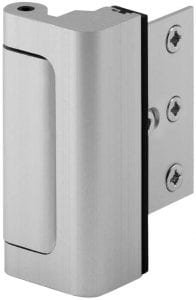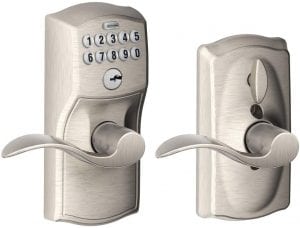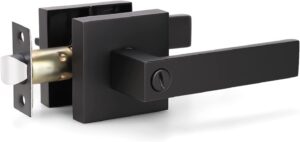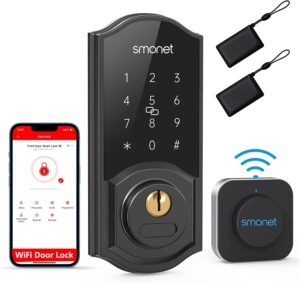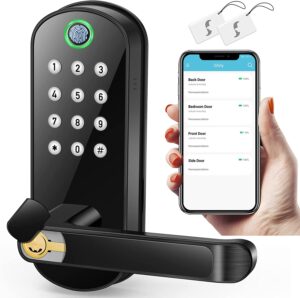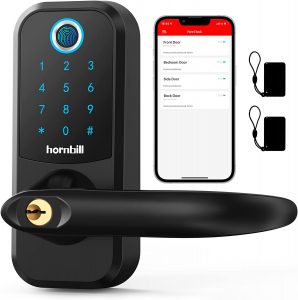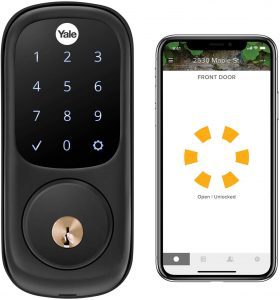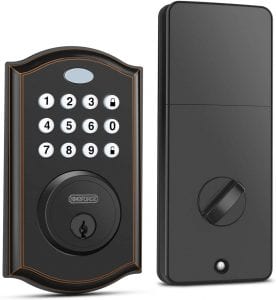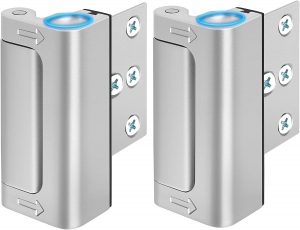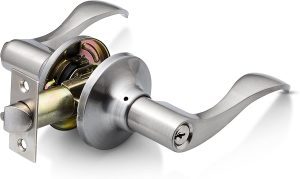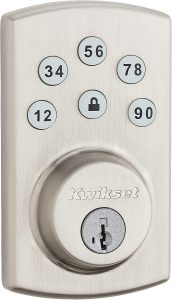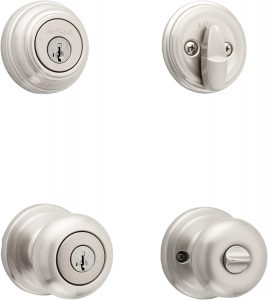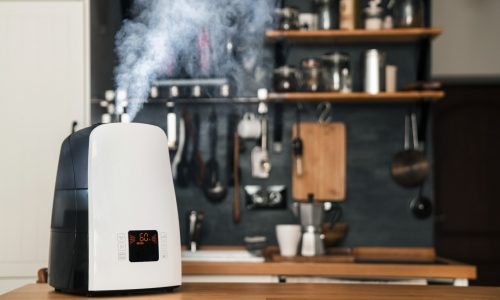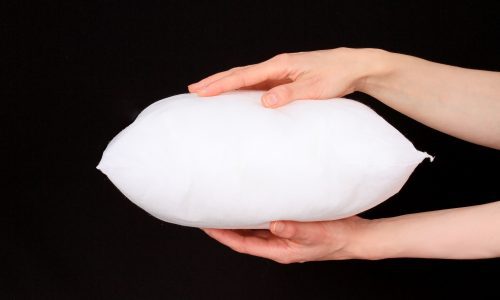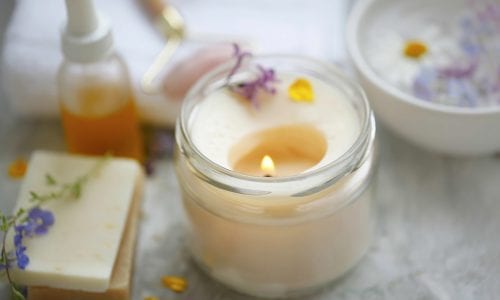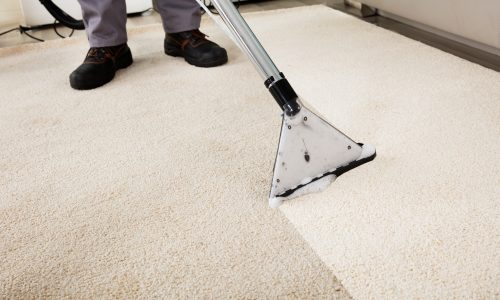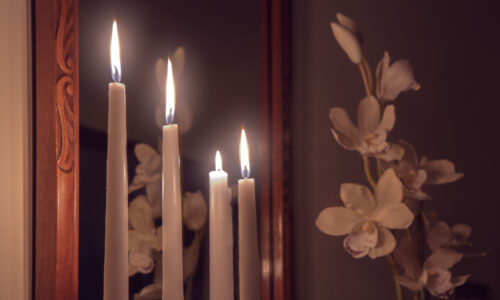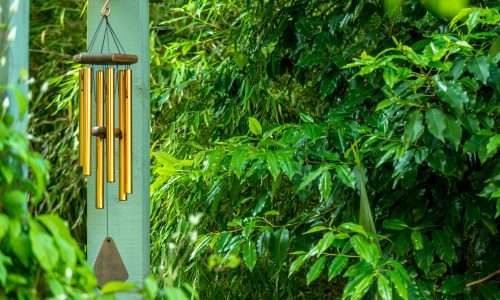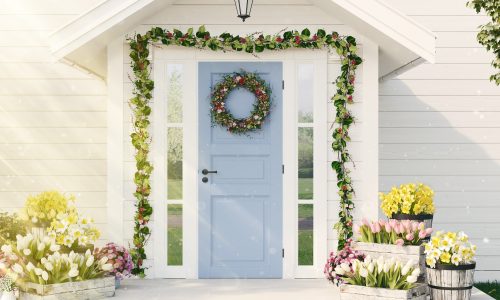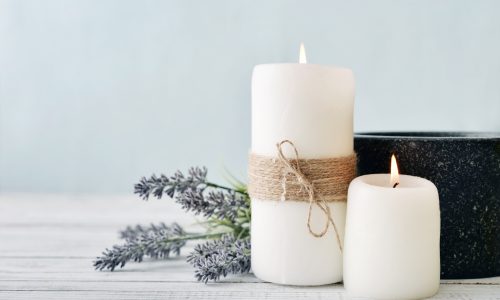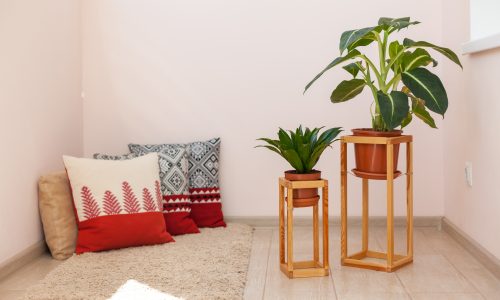The Best Door Lock For Homes
We looked at the top 13 Door Locks For Homes and dug through the reviews from 35 of the most popular review sites including and more. The result is a ranking of the best Door Locks For Homes.
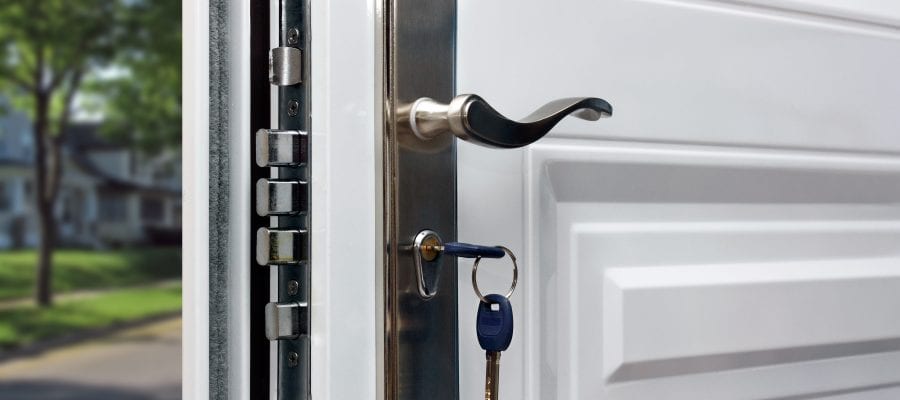
Our Review Process
Don't Waste Your Money is focused on helping you make the best purchasing decision. Our team of experts spends hundreds of hours analyzing, testing, and researching products so you don't have to. Learn more.
Our Picks For The Top Door Locks For Homes
- 1. Defender Security U-10827 Easy Install Theft Protection Door Lock For Homes
- 2. Schlage Camelot Reversible Lever Door Lock For Homes
- 3. KNOBWELL Privacy One Size Door Locks For Homes, 5-Pack
- 4. SMONET Anti-Peep Keypad Door Lock For Homes
- 5. Sifely Easy Install Automatic Door Lock For Homes
- 6. hornbill Easy Install Bluetooth Door Lock For Homes
- 7. Yale Security Wi-Fi Hands-Free Door Lock For Homes
- 8. KING FORCE Automatic Deadbolt Door Lock For Homes
- 9. WINONLY Easy Open Childproof Door Locks For Homes, 2-Pack
- 10. Bravex Elemake All-Weather Keyless Entry Door Lock For Homes
- 11. Berlin Modisch Entrance Adjustable Modern Door Lock For Homes
- 12. Kwikset 99070-101 Powerbolt 2 Easy Programming Door Lock For Homes
- 13. Kwikset 991 Juno Signature SmartKey Door Lock For Homes
Intruders won't be able to kick your door in when you use this door lock for home, as it is able to withstand 800 pounds of force. Not only is the lock easy to install, but it also features a spring-loaded design that is child-safe. Since the lock is sold in four different finishes, you won't have any trouble matching it to your current hardware.
Matches Any DecorYou'll find this door lock comes in the following finishes: bronze, brushed chrome, gold anodized and satin nickel.
This door lock for homes provides security and ease of use. Installation is fast and simple, with everything you need included, even the battery. You can add or delete user codes quickly and conveniently.
Extra Security The keyless entry option provided by this door lock for homes offers enhanced home security.
With this door lock for home set, you'll get not one, not two, but five locks! Each has a beautiful matte black finish and a modern look that fits well in any space. More importantly, the locks are able to provide an added layer of privacy that you and your guests are sure to appreciate.
Stock UpThese door locks for home can be used on either the right or left side.
Looking for a high-tech door lock for home? Grab this high-quality set, which features a touchscreen and works with Alexa. It's easy to install, comes with a remote and can be unlocked in one of four ways - key, code, app or voice.
Choice of FinishesYou'll find this door lock for home comes in a choice of black or silver.
Buying Guide
A door lock could be the only thing standing between criminals and your family, your valuables, and your sense of security. Unfortunately, you might not realize that a lock is subpar until it is too late.
Upgrading an outdated door lock for your home can be an investment you will never regret. Choosing between brands, designs, and styles might be daunting, but learning about essential aspects of door locks for homes narrows your options.
Vicki Liston writes, produces, and narrates “On The Fly…DIY,” an award-winning home improvement and DIY show of unique project tutorials for the casual DIY’er.
Protecting your home from intruders is of the utmost importance.
“Thieves are trickier than ever and to stay ahead of their latest tactics,” says Liston. “You’ve got to have a door lock built to withstand numerous types of entry attempts.”
However, the most common way burglars gain entrance is rudimentary.
“The no-nonsense way of getting past a lock is to kick it in,” Liston explains. “Seriously. If your lock has a strike plate with only ¾ inch long screws holding it into the door frame, a swift kick will dislodge the screws, and your thief has open access.
“Look for a lock with much longer anchoring screws, so they hold tight to the frame. Four 3-inch screws should be your minimum length. When I changed the lock on my front door, I discarded the included screws altogether and used four 4-inch wood screws.”
Brute force is not the only way thieves gain entrance into homes. They also use tools. Fortunately, an effective lock can help prevent this, as well.
“Lock-picking, bumping, and using a drill are all additional –and more subtle– ways an intruder can try and break into your home,” Liston acknowledges. “Lock-picking involves a set of tools to (you guessed it) pick the lock. Bumping requires a special key and a mallet, which ‘bumps’ the inner pins to realign to the special key’s shape and, thus, unlock. Drilling is not as subtle as the first two methods but involves using a cordless drill and destroying the lock mechanism to gain entry.
“Look for a door lock that is bump- and pick-resistant. A drill can damage almost any lock, but there are a few on the market that boast of being drill-resistant as well.”
Is a single or double cylinder best for the accompanying deadbolt?
“It depends,” advises Liston. “A single cylinder has a lock on the outside and a thumb turn on the inside. A double cylinder will require you to unlock with a key from both sides.
“Initially, I only used single cylinder locks as I was afraid of being stuck inside during an emergency, like a fire. However, I learned that the deadbolt wouldn’t do any good if a thief could just break a nearby window, reach in, and unlock the door. So, I only recommend single cylinders if there are no windows nearby. For doors with a window in close proximity, use a double cylinder but keep a spare key near each of these locks so everyone in the household knows where to grab it in case of an emergency.”
For further help in the decision-making process, compare the ANSI grade rating of potential door locks for your home.
“You’ll most often see a grade 3 rating, as these are commonly used in houses and apartments,” Liston shares. “If you are concerned about safety and security and you’re here doing your homework on door locks, I’d recommend a higher rating. ANSI grade 1 is the best you can get while grade 2 will still protect your home better than a ‘typical’ home lock.”
Our Expert Consultant

Home Improvement Expert
Vicki Liston writes, produces, and narrates “On The Fly…DIY,” an award-winning home improvement and DIY show of unique project tutorials for the casual DIY’er.
Home improvement and all things DIY have been Liston’s passion since she bought her first house in 2007 and she started making video blogs in 2014. She’s performed hundreds of DIY projects, from small ones to major, wall-smashing renovations and can teach you how to make a trendy DIY barn door for cheap. The proceeds earned from “On The Fly…DIY” are donated to no-kill animal shelters and rescue organizations.
Why we recommend these door locks for homes?
Products Considered
Products Analyzed
Expert Reviews Included
User Opinions Analyzed
Our experts reviewed the top 13 Door Locks For Homes and also dug through the reviews from 35 of the most popular review sites including and more. The result is a ranking of the best of the best Door Locks For Homes.
DWYM is your trusted roduct review source. Our team reviews thousands of product reviews from the trusted top experts and combines them into one easy-to-understand score. Learn more.
What to Look For
- As with any type of mechanical device in your home, door locks require regular maintenance to continue working properly. Check the screws, strike plate and hinges on occasion to be sure they are securely fastened. Carefully clean the lock according to the manufacturer’s recommendation. Most suggest mild soap and water, while others recommend using only a damp cloth to wipe locks clean. Lubricate locks once a year using a dry lubricant, such as graphite.
- If at all possible, only make copies of keys using an original key for the best results. Consider setting one new key aside for this purpose when you purchase a new door lock.
- “If you’ve already got a smart system in your home and you want the door lock to be a part of the family,” suggests Liston, “ensure it is compatible with your system before purchasing. Many of the new smart locks can easily be integrated with Amazon, Google, or Apple systems.”
- A door lock will only function properly when the door is correctly installed and in good condition. For instance, a door that is sagging might put a great deal of pressure on the latch or bolt of a door lock. This could lead to the lock failing, resulting in the inability to open unlock the door from outside or inside the house. Make sure the gap between the door and the frame is uniform across the top and sides, as well.
- If you opt for a keyless door lock or another lock that requires batteries, consider the placement of the battery compartment. “Ensure the battery compartment sits on the interior part of the door,” Liston advises, “so that it isn’t subjected to outside temperatures. A cold battery will lose its charge much faster than a room temperature battery.” Check frequently to ensure the batteries are working properly, as well.
- “If you like the convenience of keyless or touchscreen pad door looks, look for these additional features,” urges Liston. “First, the lock should have a wear-resistant screen or buttons. It doesn’t make sense to set up a lock and have a secret code if the buttons show wear or the screen leaves your fingerprints. Intruders need only to look at the wear patterns or fingerprints to narrow down their PIN guesses.”
More to Explore
People have been using door locks for almost as long as their homes have had doors. Researchers have discovered simple tumbler locks made entirely from wood that they estimate date as far back as 1000 to 2000 BCE.
The earliest locks have been found in ruins in Iraq. Archaeologists uncovered similar locks in slightly more recent ruins in Egypt. However, the Egyptians improved upon Iraqi design by adding brass pins and popularizing their use in homes and other architecture.
From Egypt, the locks made their way to homes in Greece and the Roman Empire, where wealthy Romans wore keys like jewelry to display their affluence.
Double-acting lever tumbler locks were not invented until 1778.

